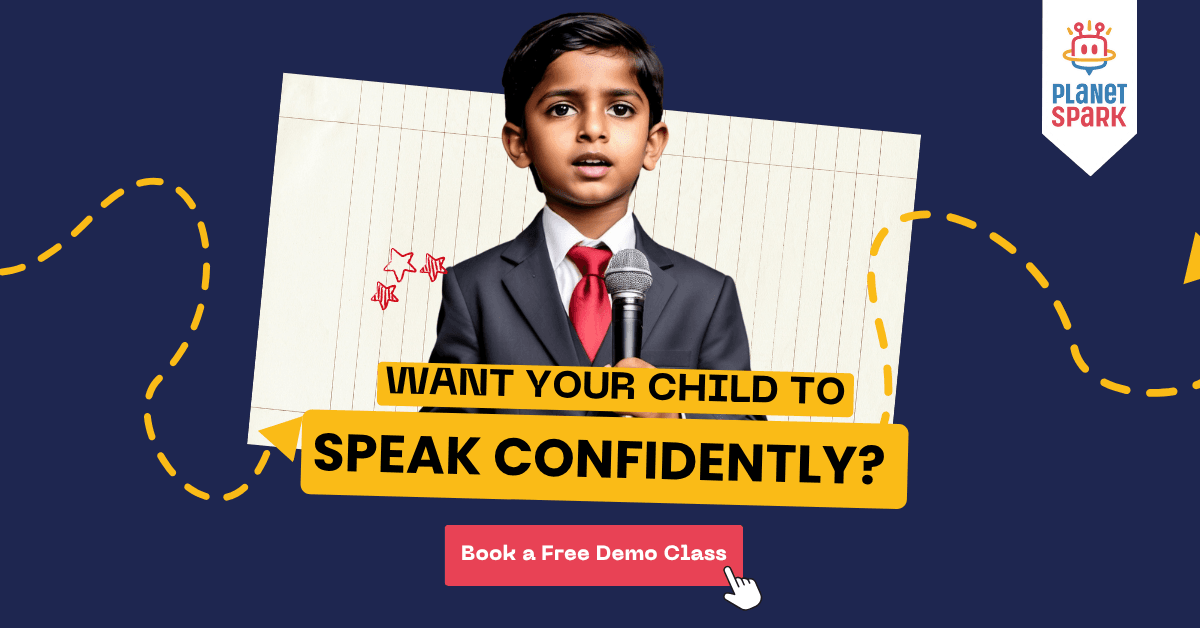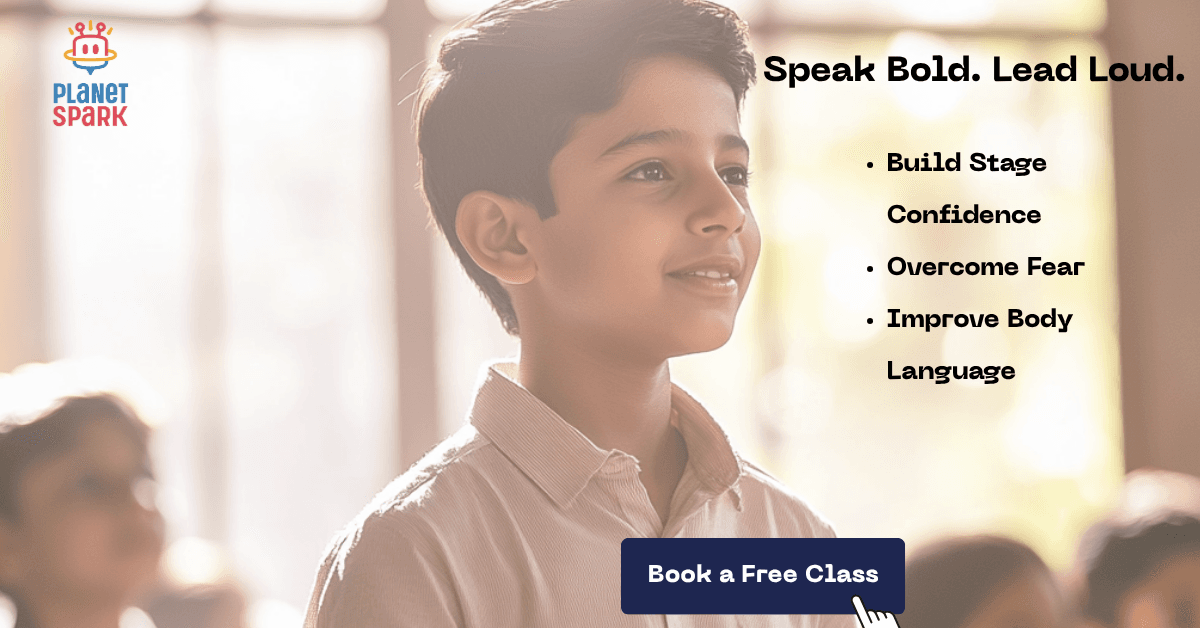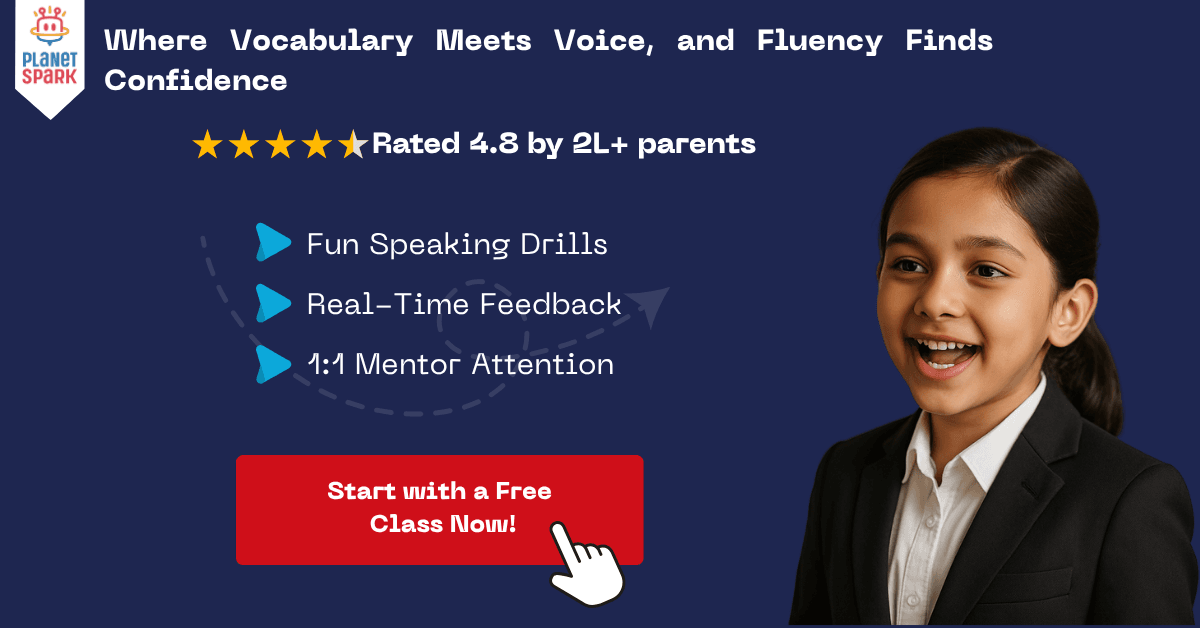5-Minute Speech on Social Media: Impact on Our Lives

Table of Contents
- Opening Lines of a Speech on Social Media
- The Positive Side of Social Media
- The Negative Side of Social Media
- How Social Media Shapes Communication Skills
- The Role of Social Media in Education
- Social Media and Youth Identity
- Social Media and Productivity
- The Influence of Social Media on Society
- Ethical Use of Social Media
- Wrapping Up a Speech on Social Media
- Social Media: The Mirror of Society
- The Future of Social Media in Communication
- Responsible Use: A Call to Action
- Why Choose PlanetSpark for Public Speaking
If you’ve ever been asked to prepare a speech on social media, you already know it’s one of the most trending and relevant topics today. Social media is not just about scrolling through feeds or sharing pictures; it has become a powerful tool shaping communication, opinions, and even careers. Students, professionals, and speakers alike often look for structured speeches on social media that explain both its advantages and disadvantages in a balanced way.
In this blog, we’ll create a detailed, storytelling-style speech on social media that you can adapt for school, college, or professional presentations. You’ll also learn how to use public speaking techniques to make your delivery impactful and memorable.
We’ll cover:
A strong opening for a speech on social media.
Advantages and opportunities created by social media.
Disadvantages and challenges like addiction, misinformation, and privacy.
How to balance your speech with real-life examples and statistics.
Tips to deliver this speech confidently in just 5 minutes.
By the end, you’ll not only have a complete speech but also learn how to present it with confidence using effective public speaking strategies.

Opening Lines of a Speech on Social Media
Every powerful speech begins with a hook. Here’s one you can use:
“Good morning, everyone. Imagine waking up to a world without Instagram, WhatsApp, or YouTube. A world where communication is slow, updates are rare, and global connections are limited. This is how life was before social media. Today, I stand before you to talk about how social media has completely transformed our lives — for better and sometimes for worse.”
A great introduction sets the stage for your entire speech, pulling the audience into your message right away.
The Positive Side of Social Media
Social media has redefined how we connect, learn, and grow. Some of its biggest advantages include:
Global Connectivity: You can stay in touch with family, friends, and professionals across the world instantly.
Learning Opportunities: Platforms like YouTube, LinkedIn, and Twitter have become modern classrooms.
Business Growth: Social media has given rise to influencers, entrepreneurs, and small businesses reaching global audiences.
Social Awareness: Campaigns for environmental issues, mental health, and human rights find momentum online.
When structuring a speech on social media, highlighting these advantages first helps establish a balanced and positive tone before moving to the challenges.
Join PlanetSpark’s Public Speaking Programs and master the art of stage presence, body language, and storytelling.
The Negative Side of Social Media
Every balanced speech on social media needs to address not just the positives but also the challenges that millions face daily. While social media connects us, it also comes with serious drawbacks.
Addiction and Time Wastage:
Social media apps are designed to keep users hooked. Children, teens, and even adults find themselves endlessly scrolling, losing precious time that could be invested in learning or building real-life relationships.Mental Health Issues:
The constant comparison with others’ “perfect lives” online leads to anxiety, low self-esteem, and depression. Studies show that excessive use of social media increases feelings of loneliness, especially in teenagers.Misinformation and Fake News:
False information spreads faster than the truth on platforms like Facebook and Twitter. A single viral post can mislead thousands, affecting public opinions and even political outcomes.Privacy Concerns:
Every click, like, and share is tracked. Many people don’t realize how much personal data they’re giving away, putting their safety and security at risk.
When preparing your speech on social media, these points will help present a realistic view that resonates with your audience.
Don’t just write a speech, deliver it like a pro!
How Social Media Shapes Communication Skills
One of the most surprising points to include in a speech on social media is how it impacts communication.
Shift to Short-Form Expression: Emojis, memes, and abbreviations like “LOL” or “BRB” have replaced full sentences. While this makes communication faster, it reduces the depth of conversation.
Decline in Face-to-Face Interaction: Many young people find it harder to hold eye contact, engage in small talk, or express emotions in person because they rely on virtual chats.
Rise of Digital Storytelling: On the positive side, platforms like TikTok and Instagram Reels have made storytelling more creative and accessible.
Including this in your speech adds a layer of insight that goes beyond just pros and cons, making your delivery unique and thought-provoking.
The Role of Social Media in Education
Education is one of the most debated topics when writing a speech on social media.
Advantages: Online learning communities, YouTube tutorials, and academic groups make learning accessible 24/7.
Disadvantages: Students often get distracted by entertainment content instead of using these platforms for productive purposes.

Social Media and Youth Identity
In a 5-minute speech on social media, discussing its effect on youth identity adds depth.
Positive: Young people can express themselves freely, explore hobbies, and connect with like-minded individuals worldwide.
Negative: The pressure to conform to beauty standards, trends, and “likes” can distort self-image and lead to identity crises.
This duality strikes a powerful emotional chord, making your speech memorable.
Social Media and Productivity
For professionals and students, social media can either boost productivity or completely derail it.
Boost: Platforms like LinkedIn provide networking, while Twitter can be a source of real-time news.
Derailment: Constant notifications reduce concentration levels, making it hard to focus on important tasks.
As a speaker, you can compare productivity to “two sides of a coin,” one side sharpens focus, the other distracts. This metaphor strengthens your delivery.
Don’t just write a speech, be the speaker everyone remembers.
The Influence of Social Media on Society
No speech on social media is complete without addressing its societal impact.
Political Influence: Campaigns and movements like #MeToo and #BlackLivesMatter gained momentum through social media.
Cultural Exchange: It brings people of different cultures together, promoting inclusivity.
Social Division: At the same time, echo chambers and polarized opinions often create division and conflict.
A strong speaker should acknowledge these contrasts while emphasizing the power of responsible use.
Ethical Use of Social Media
Finally, your speech on social media should guide the audience towards solutions. Highlight principles like:
Limiting screen time.
Verifying news sources before sharing.
Respecting others’ privacy.
Using social media as a tool for learning and growth rather than comparison.
Ending with an ethical call-to-action not only informs but also inspires change, leaving your audience motivated.
Learn how to end your speeches with impact and leave your audience inspired last few slots are open!
Wrapping Up a Speech on Social Media
Every impactful speech on social media should end with more than facts; it should leave your audience with a perspective that lingers in their minds long after you step off stage. When we reflect on the pros and cons, the opportunities and dangers, the promise and pitfalls, it becomes clear: social media is not simply an app on our phones; it’s a defining force of our generation.
What makes social media unique is its dual nature. On one hand, it is an extraordinary invention that has democratized voices, broken down barriers, and given even the quietest among us a platform. On the other hand, it is a dangerous trap where attention becomes currency and self-worth is measured in “likes” and “followers.”
A balanced speech on social media acknowledges both truths. It encourages the audience to become mindful users, not passive consumers.
Do you want your child to learn how to deliver powerful conclusions like this?
Social Media: The Mirror of Society
When you deliver a speech on social media, remind your audience that these platforms are not inherently good or bad. They are mirrors reflecting who we are as individuals and as a society.
Think of it this way: if the mirror is cracked, it’s not the mirror’s fault, it’s how we look into it. Social media can magnify kindness and awareness, but it can also amplify hate and misinformation. That’s why the responsibility lies in how we use it.
One story that resonates well with audiences is of a student who started a small online campaign to collect books for underprivileged schools. With just a simple Instagram page, the campaign spread, and within weeks, hundreds of children received free books. That’s the positive power of social media.
Contrast this with another story: a young girl who developed anxiety and body image issues after constantly comparing herself to filtered pictures online. The very same platforms that empowered one child ended up harming another.
This juxtaposition is powerful because it shows the audience that the real difference lies in choice.

The Future of Social Media in Communication
In a few years, social media won’t just be about scrolling or posting; it will become an immersive experience with AI, augmented reality, and virtual platforms. For today’s young learners, being able to talk about these changes with clarity and confidence is vital.
Imagine delivering a speech on social media in 2030. You may be discussing virtual classrooms inside the “metaverse,” or AI-driven influencers that shape shopping and politics. Preparing children to speak confidently on such futuristic topics is no longer optional; it’s essential.
And here lies the magic of a well-delivered speech: it doesn’t just describe the present; it paints the future. Audiences love to walk away not only informed but also inspired about what lies ahead.
Responsible Use: A Call to Action
Every powerful speech must close with a call to action (CTA). For a speech on social media, this could be:
Use social media to learn more, not just scroll more.
Share content that uplifts instead of divides.
Respect the privacy of yourself and others.
Don’t let likes define your worth.
Want your child to learn how to close a speech with conviction that moves people to action?
Why Choose PlanetSpark for Public Speaking
If you want your child to not just write a good speech on social media but also deliver it like a future leader, PlanetSpark is the place to be. Here’s why:
1:1 Public Speaking Coaching
Every child is unique, and so is their learning style. PlanetSpark provides one-on-one coaching with certified communication experts and child psychology specialists. This ensures personalized attention, customized feedback, and steady growth.
Step-by-Step Skill Building
We don’t just throw children on stage; we build their confidence step by step. The curriculum includes:
Body Language & Stage Presence
Voice Modulation & Tone Control
Speech Structuring & Persuasive Speaking
Storytelling & Creative Writing
Extempore Speaking & Debating
TED-Style Training Modules
Children are trained using the “hook, message, story, call-to-action” format, just like TEDx speakers. This helps them learn how to craft speeches that not only inform but also inspire.
Global Exposure
With peers from over 13 countries, children practice speeches in live debates, panel discussions, and storytelling circles. This global exposure builds cross-cultural confidence.
Competitions & Public Speaking League
What’s the point of learning if you never perform? PlanetSpark organizes frequent competitions and a national-level Public Speaking League where kids showcase their skills in real performance environments.
Video Feedback for Growth
Every child receives recordings of their speeches. Coaches analyze these with them, giving actionable feedback. Watching themselves on video accelerates improvement and builds self-awareness.
In short, PlanetSpark is not just about learning; it’s about transforming children into confident speakers, persuasive leaders, and creative thinkers.
Social media will keep evolving, but the ability to speak confidently, persuasively, and fearlessly will always remain timeless. Give your child that edge with PlanetSpark. Our Public Speaking Programs are filling fast, and only a few seats remain in this month’s batch.
Don’t let your child miss out on becoming the leader everyone listens to.
Frequently Asked Questions
You should always begin with a hook—a question, a powerful fact, or a short story. Example: “Can you imagine a single day without Instagram, WhatsApp, or YouTube?” This instantly grabs attention.
Social media keeps us connected, provides instant access to information, opens business opportunities, and raises awareness on global issues. However, it must be used in moderation to avoid negative effects like distraction and comparison.
For school or college, 3–5 minutes is ideal. For competitions or public events, it can extend to 7–10 minutes with stories, examples, and audience engagement.
Students should use examples, statistics, and personal stories. Adding humor or real-life scenarios also helps keep the audience interested.
Yes, when used correctly. It encourages creative expression through blogs, videos, and debates. However, overuse may reduce face-to-face communication skills.
Personalized Communication Report
Record a video to get a AI generated personalized communication report for your child

Hi There, want to try these
tips for your child with
LIVE with our expert coach?
Let's check your child's
English fluency
